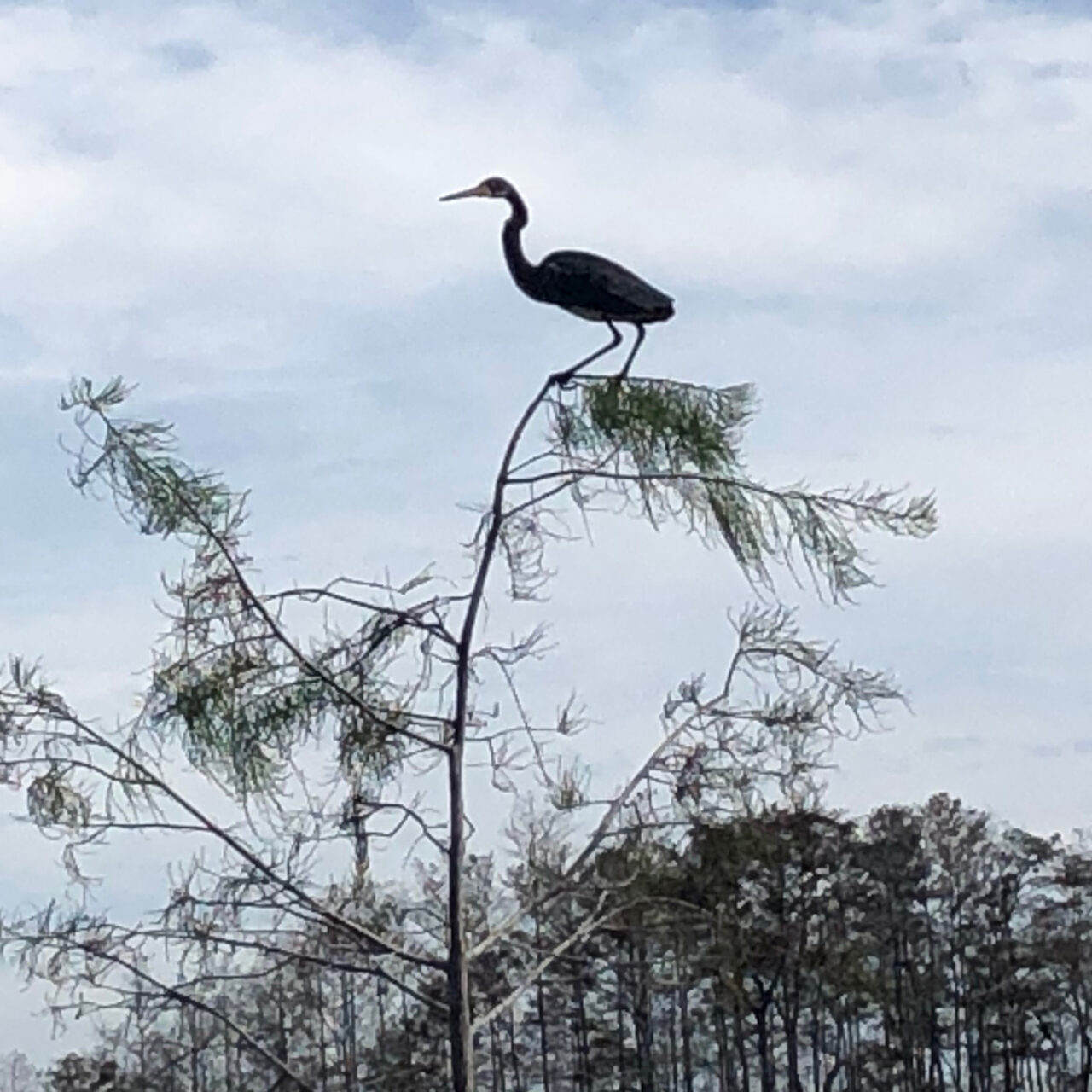An interpretive plan for gators, birds, hunters, and pythons
While obscured by the larger adjacent Everglades National Park in most people's consciousness, Big Cypress has a claim to authenticity that its more popular neighbor park does not. Since its establishment in 1974 as the first National Preserve, traditional ways of hunting, fishing, and ethnobotany by the Miccosukee and Seminole nations have been protected. In addition, 300 privately owned camps remain in the Preserve. As a result, this alternative model to the typical National Park system has thrived. Regardless of human activity, thousands of species and ecosystems are present in the Preserve. Our new interpretive plan will ensure the success of this Preserve continues into the future.
Unfortunately, the wide variety of fauna includes the rogue Burmese Python. Since 1980 these constrictors, native to Southeast Asia, have ravaged the raccoon, opossum, rabbits and fox population. Except for the alligator, there are no native predators. Homo sapiens also pose a challenge; occasionally, inexperienced off-roaders need to be extricated from a wet trail. The Tamiami and Route 75 highways are a death trap for panthers and other creatures crossing them. There are animal passages beneath the roads, but foxes, turtles, and panthers do not read road signs. Perhaps in the far future, these asphalt tacts will be allowed to crumble back into the swamp while overhead, a Hyperloop tube will transport folks and material between Miami and Tampa.


Left, a Big Cypress trail in the wet season, wet walks are taken for granted. Rght, the boardwalk at HP Williams Roadside Park keeps you dry.
To help Big Cypress plan for the near future, the next ten years, the Park Service selected Goolrick Interpretive Group of Atlanta to lead the creation of a new Long-Range Interpretive Plan. Each park in the nation has one of these plans, and they are required to be updated every ten years. Content•Design was added to the team to meet the media plan requirement.
A Long-Range Interpretive Plan, or “Lirp” (if you are a ranger), involves a deep dive into the park mission and the current challenges. For example, is the Park winning or losing the challenges of nearby development, climate change or invasive species?
These trips always begin with a tour; our team is guided by the park staff. This is a treat in disguise; the academic staff knows their sites very well, and we treasure the insights shared with us. At Big Cypress, it was encountering the Immokalee Middle School students on a wet walk and learning about the former life of the Big Cypress Institute site. It was once a juvenile detention center, and there was an escape…to be continued. Faye and I noted all that we learned to include in the post-trip report documenting the eight stops on our first day.

The real work lies in the workshops, typically four to five sessions per day for three days over two trips. Faye Goolrick has led the workshops for over 25 reports. She is an expert at dramatizing the opening query for a session topic. Her professional and personal depth of experience ensures that a humorous and insightful anecdote delivered in her distinctive Atlanta voice will refocus the workshop participants when spirits are flagging, or participants are at cross-purposes. The breakout groups always generate lively discussions, and by the end of the day, post-it notes are scattered over the large notepad pages that cover one wall of the conference room/theater. Everything is captured and taken into consideration for the final report.
The best workshops have a broad constituency; our sessions were well-attended by staff, unfortunately, the only non-park entity was the Big Cypress Institute, which raises money for the Park by operating the gift shops and other programs. Perhaps there will be another occasion for the fan-boat tour operators and the swamp guides who take visitors on twilight kayak trips to add their voice. These residents of Everglades City and surrounding towns rely on the stewardship of Big Cypress for their livelihood.
Big Cypress has significant changes within the next two years that impact interpretation. For example, new infrastructure will improve cell reception, the western entry will be transformed with the removal of disused municipal offices on Preserve land, and the eastern entry visitor center (Oasis) is being demolished; what will replace it? The changes all have lasting impacts on visitor services, interpretation especially.
The foundations and recommendations work is complete, the implementation review will take place soon and by Independence Day, Big Cypress will have an interpretive plan to guide it through the next decade.


